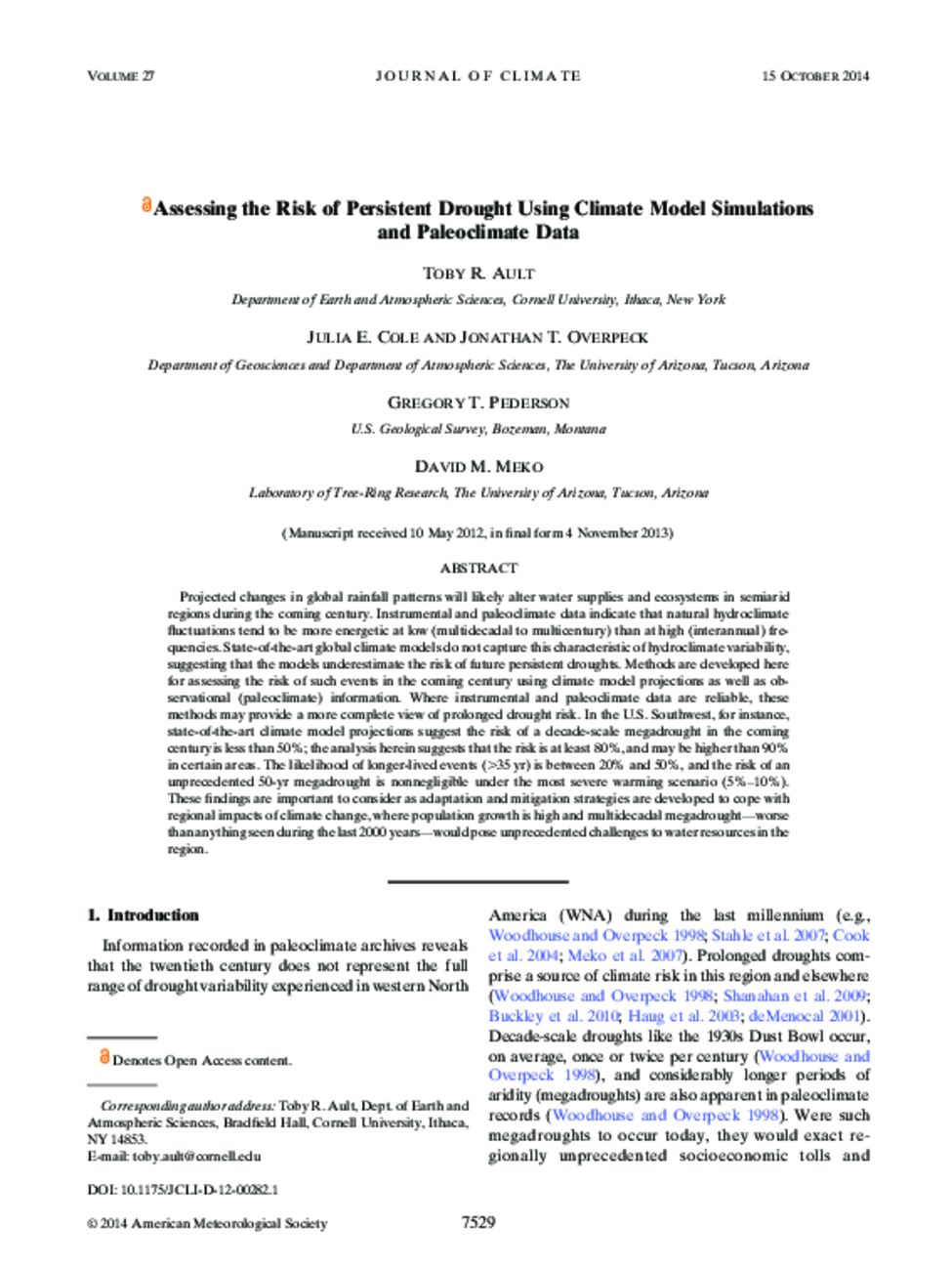Assessing the Risk of Persistent Drought Using Climate Model Simulations and Paleoclimate Data
Projected changes in global rainfall patterns will likely alter water supplies and ecosystems in semiarid regions during the coming century. Instrumental and paleoclimate data indicate that natural hydroclimate fluctuations tend to be more energetic at low (multidecadal to multicentury) than at high (interannual) frequencies. State-of-the-art global climate models do not capture this characteristic of hydroclimate variability, suggesting that the models underestimate the risk of future persistent droughts. Methods are developed here for assessing the risk of such events in the coming century using climate model projections as well as ob- servational (paleoclimate) information. Where instrumental and paleoclimate data are reliable, these methods may provide a more complete view of prolonged drought risk. In the U.S. Southwest, for instance, state-of-the-art climate model projections suggest the risk of a decade-scale megadrought in the coming century is less than 50%; the analysis herein suggests that the risk is at least 80%, and may be higher than 90% in certain areas. The likelihood of longer-lived events (.35 yr) is between 20% and 50%, and the risk of an unprecedented 50-yr megadrought is nonnegligible under the most severe warming scenario (5%–10%). These findings are important to consider as adaptation and mitigation strategies are developed to cope with regional impacts of climate change, where population growth is high and multidecadal megadrought—worse than anything seen during the last 2000 years—would pose unprecedented challenges to water resources in the region.

